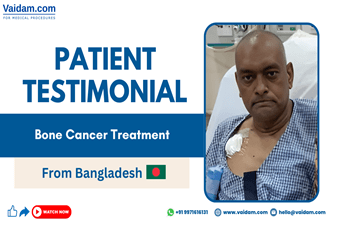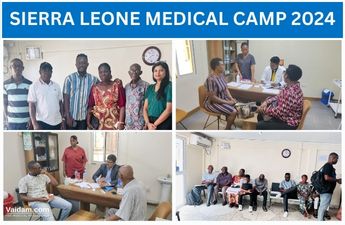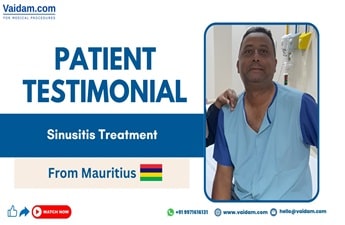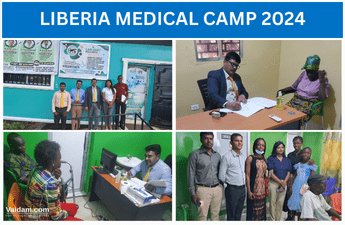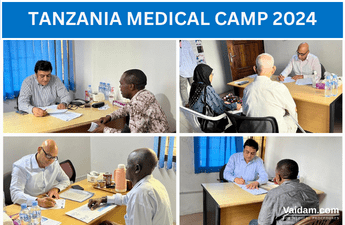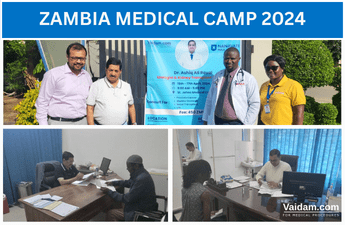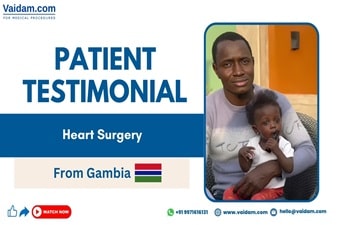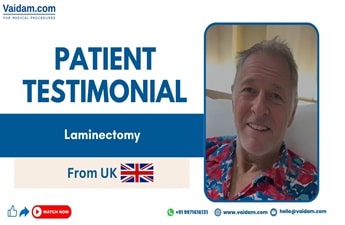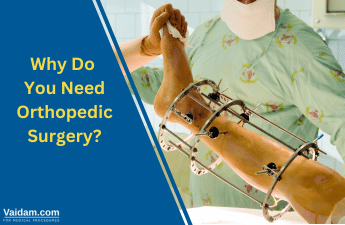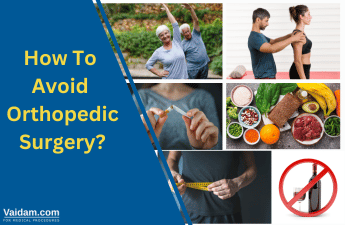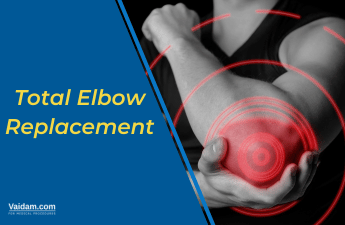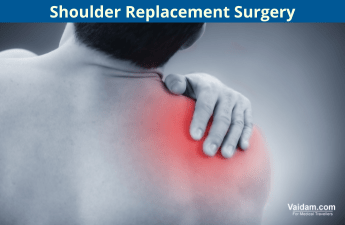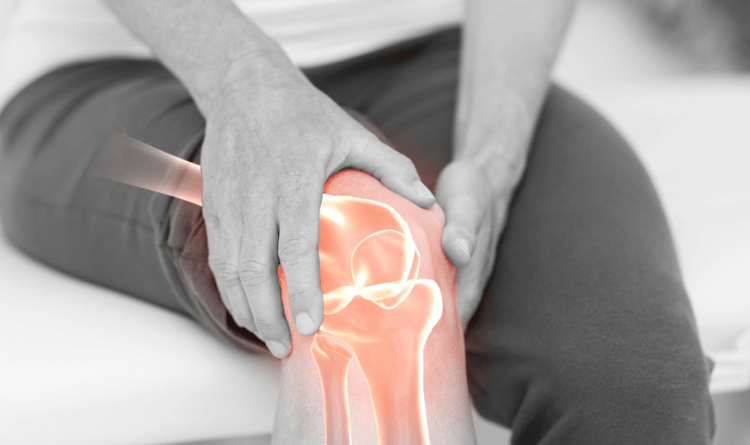
Are you suffering from pain, swelling, and stiffness in your joints? Do you have difficulty performing daily tasks like lifting a grocery bag, holding a cup, or walking to the car? Do you feel a decrease in the range of motion of the joints? All these can be a sign of osteoarthritis. It is a painful condition that can be hard to live with.
You may be surprised to know that more than 32.5 million people suffer from the disease in the USA alone. According to the CDC, 1 in 7 adults have osteoarthritis, and over 50% of them are of working age.
An Orthopaedic and Joint Replacement Surgeon treats osteoarthritis. Consulting a skilled physician is necessary for the proper management of the disease. India, Thailand, Germany, Turkey, and the UAE are home to some exceptionally skilled orthopedic doctors.
Lifestyle changes and medications manage osteoarthritis. When medicines cannot treat the disease, the final option is joint replacement surgery. The knee replacement surgery in India starts from INR 2,00,000. For hip arthroplasty, the price starts from INR 2,30,000.
Get in Touch with Medical Experts
What is Osteoarthritis?
Osteoarthritis is a degenerative joint disease (DJD) and the most common form of arthritis. The condition is more likely to develop when people age. It causes the breakdown of the cartilage, and bones within the joint start to rub together. This leads to pain, swelling, and loss of mobility.
Also referred to as the wear and tear type of arthritis, the disease can affect any joint in the body. However, the most common joints affected by osteoarthritis are:
- Hands
- Shoulder
- Finger
- Spine
- Knees
- Hips
Osteoarthritis (OA) is typically of two types: primary arthritis and secondary arthritis.
- Primary Arthritis: It is the most common and generalized osteoarthritis affecting the thumbs, fingers, hips, knees, spine, and big toes.
- Secondary Arthritis: This type of osteoarthritis occurs with a pre-existing joint abnormality such as injuries/trauma, infectious arthritis, rheumatoid arthritis, gout, and genetic joint disorders (Ehlers-Danlos).
Who is Affected By Osteoarthritis?
X-ray reports of 80% of older adults (aged 55 and above) suggest osteoarthritis. Approximately 60% of these adults experience symptoms related to the disease. According to WHO, 528 million people were living with OA worldwide in 2019.
A typical onset for osteoarthritis is the late 40s to mid-50s. However, this does not mean that the disease cannot affect people of young age. The younger population can also develop OA due to trauma or injury, joint deformity, or genetic defect.
The OA is more likely to affect women than men, especially after menopause.
What are the Symptoms of Osteoarthritis?
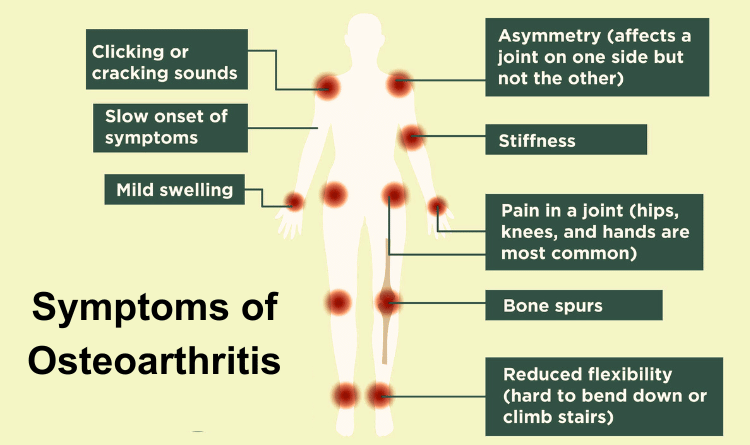
In osteoarthritis, the symptoms appear slowly and begin with a single or a few joints. Common signs of OA include:
- Joint stiffness, usually in the morning or after taking a long rest. The stiffness can last for up to 30 minutes.
- Joint pain, which improves with rest. In the later stages of OA, the pain gets worse at night.
- Changes in the joint that limit its movement.
- Swelling of the joints, especially after moderately using the joint. The selling is due to soft tissue inflammation.
- A decrease in joint mobility and range of motion.
- Bone spurs (extra bits of bone) can form around the joints affected.
- The joint feels tender when a light pressure is applied to it.
- Hearing popping or crackling when using the joint
Symptoms specific to the joints affected are:
- Hands: Bony enlargements and changes in the shape of finger joints.
- Knees: Hearing a grinding or scraping sound while walking. The knee can also buckle due to muscle and ligament weakness.
- Hips: Pain and stiffness in the groin, buttocks, or inner thighs. The hip pain due to osteoarthritis can also radiate to the knees.
- Spine: Pain and rigorousness in the lower back and the neck region. Osteoarthritis of the spine may also lead to spinal stenosis.
How is Osteoarthritis Diagnosed?
Osteoarthritis is not diagnosed through a single test. The disease combines physical examination, medical history, imaging tests, and blood tests for an accurate diagnosis.
- Physical Examination: During a physical exam, the orthopedic doctor will look for signs like tenderness, swelling, and redness in the joint. They will also check the ROM (range of motion) and flexibility of the joint.
- Blood Tests: There's no specific blood test to diagnose OA. However, certain tests are done to rule out any other causes of the joint pain, like rheumatoid arthritis.
- Joint Fluid Analysis: Fluid is taken from the affected joint using a needle, which is then tested for inflammation. The fluid is also tested to find if the symptoms are being caused by infection or gout rather than osteoarthritis.
- Imaging Tests: Imaging tests are done to get pictures of the affected joint. They include
- X-rays: An X-ray cannot capture the cartilage, but it can reveal cartilage loss by showing the narrowing of the space between the bones.
- MRI Scan: With the help of a strong magnetic field and radio waves, the MRI scan helps produce clear images of the bones and cartilage.
What are the Risk Factors of Osteoarthritis?
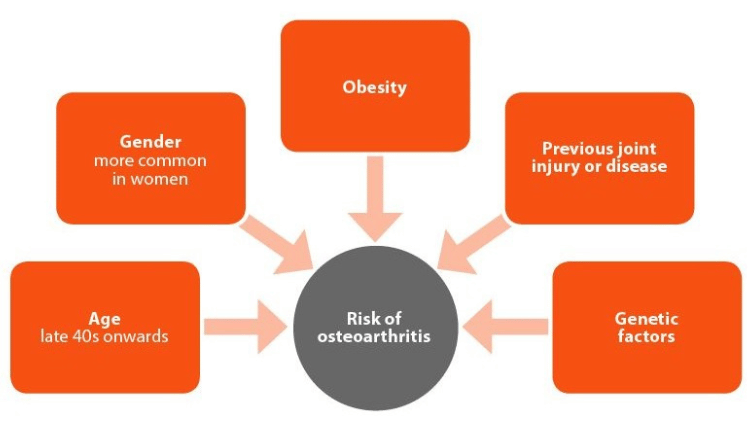
Osteoarthritis is a wear-and-tear arthritis that occurs when the cartilage (cushioning at the end of bones) deteriorates. With the wear down of cartilage, the bone starts to rub on each other.
Several risk factors can increase the probability of developing osteoarthritis. Some of these are:
- Age: The risk of OA increases with age. It typically affects people aged 55 and above.
- Gender: Women have higher chances of developing osteoarthritis compared to men.
- Obesity: More than average body weight puts extra pressure on the joints. Obesity is marked by excess fat tissues, which produce specific proteins that cause harmful inflammation in the joints.
- Injuries: Joint injuries can occur while playing sports or from an accident. These injuries significantly increase the chances of osteoarthritis. Injuries that happened many years ago can also develop into OA.
- Continuous stress on the joint: The risk of OA increases if you do a job or play a sport where repeated stress is placed on a joint.
- Deformities of bone: People born with defective cartilage or malformed joints can also develop osteoarthritis in the future.
- Metabolic disorders: Certain metabolic disorders like hyperlipidemia and diabetes mellitus increase free radicals in the body. These disorders cause an inflammatory response in the body, increasing the chances of osteoarthritis.
- Menopause: Estrogen helps reduce the oxidative stress on the cartilage and acts as a protective agent for bone health. In women who have reached the stage of menopause, the amount of estrogen decreases. This increases the risk of developing OA.
What is the Treatment Approach For Osteoarthritis?
The treatment approach for osteoarthritis depends upon the severity of the disease. The goals of treatment include:
- Reducing pain
- Improving joint function
- Stopping the disease progression
- Improving the quality of life of the patient
Osteoarthritis is treated using:
Medicines
Medications help relieve the symptoms of osteoarthritis, including pain.
- Acetaminophen: More commonly known as paracetamol, this nonopioid analgesic helps relieve mild to moderate pain associated with osteoarthritis.
- NSAIDs: Nonsteroidal anti-inflammatory medicines such as naproxen and ibuprofen can be taken over the counter in recommended doses. These drugs also help in reducing the pain. NSAIDs are known to cause peptic ulcers and upset stomach if taken in more than regular doses.
- Duloxetine: It is an antidepressant that is approved to treat chronic pain, including osteoarthritis.
Therapy
Physical therapy and occupational therapy are treatment methods for osteoarthritis.
- Physical Therapy: A physical therapist trains the OA patients and teaches them a few exercises that help increase the strength of the muscles around the joint, reducing the pain and increasing flexibility.
- Occupational Therapy: An occupational therapist helps the osteoarthritis patient to do day-to-day tasks in a way that does not put extra stress on the joints. For example, sitting on stools in the shower rather than standing and using a toothbrush with a wider grip makes brushing easier.
- TENS, or Transcutaneous Electrical Nerve Stimulation, relieves pain using a low-voltage electrical current. It can provide short-term relief to people with hip and knee OA.
Surgeries and Other Procedures
Surgery is required to treat severe osteoarthritis, especially when other treatment modalities fail.
- Cortisone Injection: Corticosteroid injections help relieve pain for a longer duration, generally a few weeks. However, there is a limitation to the number of injections you can take in a year, as steroids are also known to damage the joints over time.
- Lubrication Injections: Injecting hyaluronic acid in the joints helps cushion the joints.
- Realigning Bones: When osteoarthritis damages one side of the joint more than the other, an osteotomy is performed to correct the deformity. The surgery involves cutting a part of the bone to reshape or realign the bone. It helps shift the weight away from the deteriorated portion of the bone.
- Joint Replacement: A total joint replacement is the only option when no other remedy works. It is done by replacing the worn-out joints with artificial ones.
Here is a video of Dr. Amit Sharma, an Orthopedic and Joint Replacement Surgeon, explaining osteoarthritis treatment in India.
How is Osteoarthritis Different From Rheumatoid Arthritis?
Osteoarthritis and rheumatoid arthritis are both common forms of arthritis that cause joint damage and pain. Rheumatoid arthritis, a type of autoimmune disease, occurs when the body's immune system sees the joints as enemies and attacks them. On the other hand, osteoarthritis is not an autoimmune disease. OA occurs due to extensive wear and tear of the joints.
Takeaway
Osteoarthritis is a degenerative joint disorder affecting millions of people worldwide. The condition is marked by symptoms like joint pain, redness, swelling, loss of flexibility, decreased range of motion, etc. OA risk factors include obesity, metabolic disorders, menopause, injuries, and joint deformities. Osteoarthritis is managed using medications and physical therapies. In severe cases, joint replacement surgery is performed.



